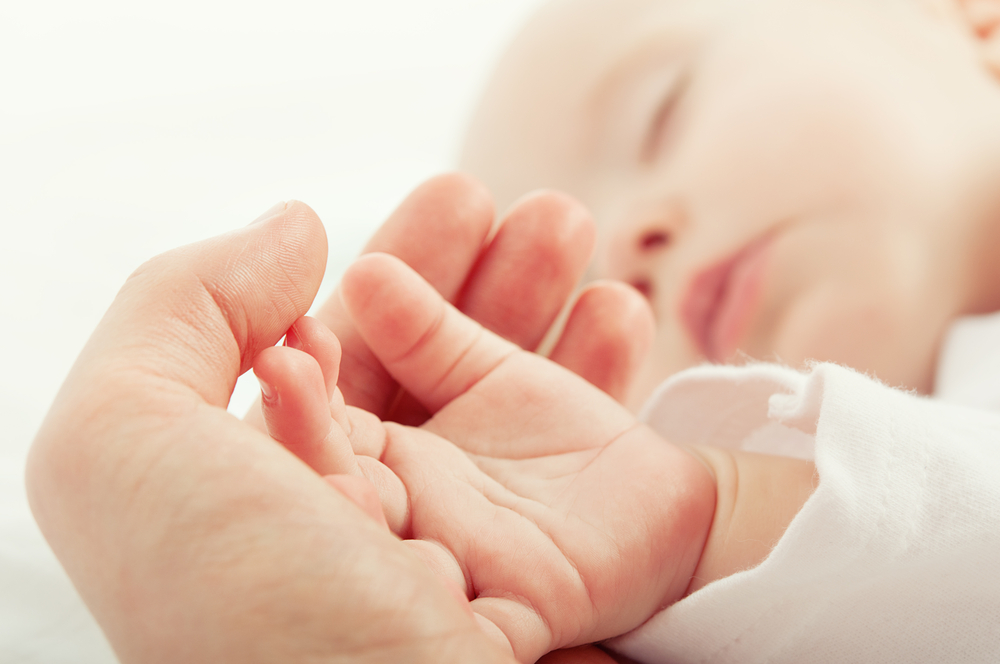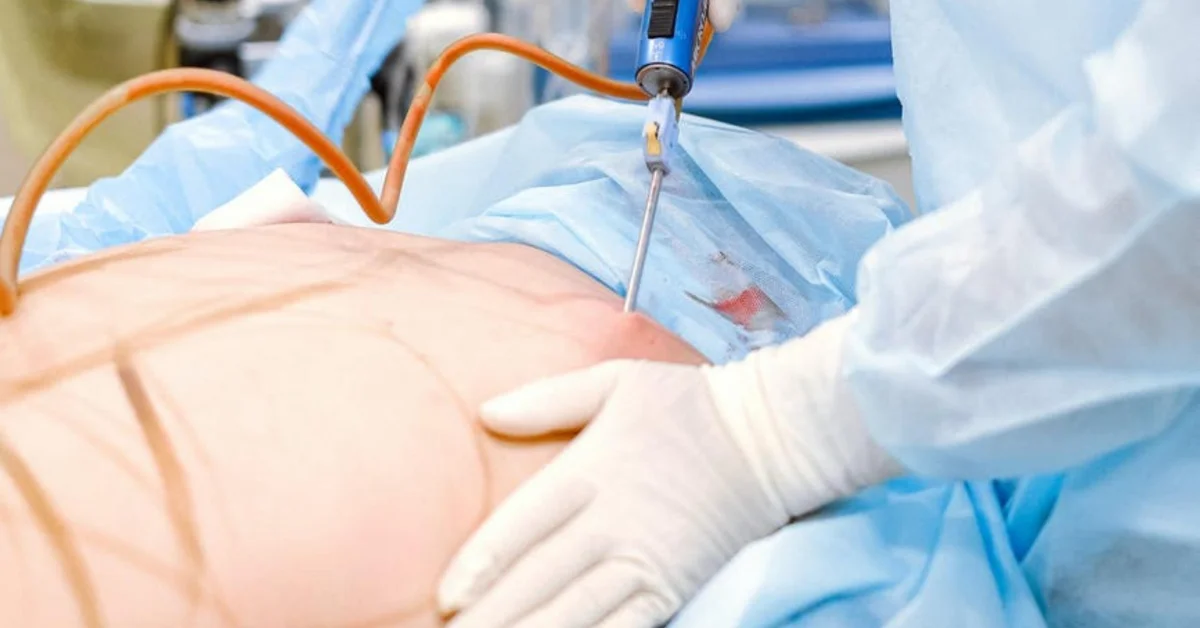- Breast augmentation can now be performed by taking unwanted fat from one area of your body and transferring it to your breasts.
- Fat transfer breast augmentation can be a good option for women who prefer natural results as opposed to having an implant placed in their breast, but it’s not suitable for every woman.
- Postoperative discomfort to the breasts after fat transfer augmentation is considerably milder as compared with breast augmentation with implants
Since 2006, breast augmentation has been the nation’s most popular cosmetic procedure year after year. Over 290,000 patients choose to have their breasts enhanced through surgery last year alone, according to recent statistics from the American Society of Plastic Surgeons (ASPS).
The same statistics also show an increase in the popularity of fat grafting, a procedure where fat is taken from one area of the body and transferred to another. 72% more breast augmentation via fat transfer increased were performed in 2016 than in the previous year.
What is fat transfer breast augmentation?
Fat transfer breast augmentation, technically referred to as augmentation mammoplasty using autologous fat transfer, uses liposuction to remove fat from one part of your body — typically the tummy, thighs, or flanks (love handles) — and inject it into your breasts.
How is the procedure done?
First, the plastic surgeon selects a donor site. The fat is then extracted using a special liposuction method that prevents the destruction of living fat cells. After processing the suctioned fat and fluid into pure fat, the surgeon carefully injects hundreds of minute individual fat droplets into the breast site using an instrument called a cannula.
This method is used to prevent the small vessels near the tissue from bleeding, in turn preventing the transferred fat cells from dying. Through this process the fat is naturally incorporated into the breasts’ matrix of adipose (fat) tissue, resulting in larger breasts.
Ideal candidates
Fat transfer can be a good option for women who prefer natural results as opposed to having an implant placed in their breast, but it’s not suitable for every woman.
“Ideal candidates for fat transfer breast augmentation are patients who desire a modest increase in breast size without a significant need for breast lift, and who have adequate fat in donor sites,” says Dr. Ulysses H. Scarpidis, Director of Plastic Surgery at Scarpidis Aesthetics in New York City. “Younger patients who do not smoke and have a healthy circulation often times have better, more consistent results.”
A patient’s health and relative weight are also important factors. “I prefer to work with healthy patients because they simply heal better than patients who are non-compliant with their nutritional intake or who are smokers,” says Dr. Gregory A. Buford a board-certified plastic surgeon and author of two books, Beauty and the Business and Eat, Drink, Heal: The Art and Science of Surgical Nutrition.
The quality of the fat is a crucial factor. “The patient who has ‘good fat’ in sufficient quantities to produce a desirable result is an ideal patient,” says New York City plastic surgeon Dr. Leonard Grossman. He also points out that good candidates understand that more than one procedure may be necessary.
What are the benefits of fat transfer breast augmentation?
Natural breast augmentation has several potential advantages. One is the fact that it doesn’t involve any artificial materials. If you like the idea of using your own fat from your abdomen, or other area, rather than a silicone implant, then natural breast augmentation may be right for you. It is also considered to have a more natural feel than the silicone and saline solution that breast implants are filled with.
According to Scarpidis, using your own fat to augment your breast eliminates some of the potential complications of traditional breast implants. These include capsular contracture — the formation of a capsule around the breast implant that is sometimes visible and painful.
Rippling, implant infection, and implant puncture or failure, are also among the complications that fat transfer breast augmentation may help to avoid. Additionally, “fat cells are living cells that produce many proteins that improve skin texture, skin pliability, and overall skin health,” says Scarpidis.
In recent years major strides have been made to minimize the scarring from breast augmentation, such as placing the incisions in discreet locations. That said, with natural breast augmentation you don’t have to worry about scarring at all, as any scarring is virtually invisible to the untrained eye, according to Grossman. He also points out that patients don’t have to worry about implant breakage or replacing an implant.
While today’s implants come in many shapes and sizes, augmentation via fat transfer offers more flexibility; the amount and location of the fat is tailored to the individual patient’s wants and needs.
Last but not least is the fact that the procedure allows patients to eliminate fat from areas of the body where it is unwanted, a big plus for those wanting to put their annoying pockets of fat to work for them.
Can fat transfer be combined with implants?
In a word, yes. Most plastic surgeons believe that combining fat transfer with breast implants is a good option in some cases. In these cases the implant is typically placed below the muscle — known as subpectoral placement.
Why would you want to combine the two? “When used in combination with a breast implant, the fat often acts as a contouring agent to help better control the overall shape and contour of the breast, and can effectively fill in gaps and volume where the implant has not,” Buford explains.
Many plastic surgeons consider this an ideal option for thin patients that need some areas filled in, such as the upper pole (the area of the breast above the implant). “The implant allows larger volumes and the fat allows smoother contours in patients with thinner subcutaneous fat tissue,” says Dr. Gregory M. Fedele, a board-certified plastic surgeon practicing in Beachwood, OH. Adding fat can also make the implant appear more natural or be used to influence the shape of the breast, if necessary.
According to Dr. Gurmander Singh Kohli, a board-certified plastic surgeon in Melrose, MA, fat transfer can also be used after the fact for patients that have already undergone breast augmentation with implants. Examples include patients that were left with asymmetries after the initial procedure, those whose tissues have thinned out with aging, and those with implant imperfections that have become visible. “[Addressing these concerns with fat grafting] is a much simpler procedure and gives very predictable results,” says Kohli.
However, some surgeons don’t believe that combining fat transfer with breast implants is a good first option. “If a patient is interested in implant augmentation, almost any size can be achieved with implants alone,” says Scarpidis. Once a patient has undergone implant based surgery, fat transfer remains a good option for improving asymmetries as well as specific areas of the breast such as the cleavage, and for further enhancement of the breasts at a future date.
What kind of recovery is needed for a fat transfer breast augmentation?
Unlike breast augmentation with implants which requires recovery only from the procedure performed on the breasts, fat transfer breast augmentation requires recovery from both the fat harvesting procedure performed somewhere else on the body and the procedure which transfers the harvested fat to the breasts.
The fat harvesting procedure is essentially a liposuction procedure and generally is mild and well-tolerated. There is usually 7-14 days of swelling and bruising, but it may take a full 3-6 months for complete resolution. The amount and duration of swelling and bruising is generally proportional to the amount of fat harvested – more fat harvested results in more swelling and bruising that lasts for longer periods. These can be minimized with postoperative surgical garments and lymphatic massage to the areas. Most patients require 1 week off of work or school and may resume exercise after 1 week.
Recovery to the breasts from fat transfer augmentation similarly consist of swelling and bruising. Depending upon the amount of fat grafting, it generally takes 6-12 weeks to resolve. Postoperative discomfort to the breasts after fat transfer augmentation is considerably milder as compared with breast augmentation with implants. This is very well controlled with 1-2 days of narcotic pain medications then with Tylenol alone. Injection of Exparel liposomal bupivcaine at the time of surgery may negate the need for narcotics altogether.
What is the cost?
The national average cost for breast augmentation with fat transfer is $6,525, which is comparable to the average cost of breast augmentation with implants at $6,300.
In calculating the cost differences between the methods, it should be noted that because 50%-65% of the fat grafted may be absorbed in fat transfer breast augmentation, it may require multiple surgeries to achieve the ideal size with that method.
Breast augmentation with implants generally only requires one procedure to achieve optimal size.
Is it too good to be true?
Not really, but there a many things a potential patient must consider before choosing to “go natural.” For example, among plastic surgeons there are differing opinions with regard to the reliability of fat transfer and the predictability of the technique’s results. “Approximately 50-65% of the fat graft will be permanent, but this can vary and there can be unequal reabsorption of the fat leaving asymmetry that may require revision fat grafting,” says Fedele.
This is due in large part to the fact that fat injections to the breasts involve the transfer of living fat cells. When these cells are transferred to the breasts, blood supply must be reestablished in order for them to survive. “Too many fat cells transferred overcrowd the blood vessels, resulting in some fat cells not receiving adequate access to the blood vessels. In such cases they are reabsorbed by the body, as they lack the necessary vitamins, nutrients, and oxygen to survive,” says Scarpidis.
“Furthermore, differences in the number of blood cells between the right and left breasts can result in different survival rates of fat cells transferred,” he adds. “These can affect the results and symmetry.”
Results of fat transfer to the breasts depend largely on the viability of each patient’s fat cells. It is also important to understand that fat cells transferred to the breasts will continue to act like fat cells — weight gain will cause them to enlarge, and weight loss will make them diminish.
Other factors that affect fat cell viability in fat transfer surgery, according to Scarpidis:
- Harvesting technique
- Injection technique
- Volume injected
- Patient anatomy
- Patient healing capacity
- Asymmetries between a patient’s breasts
He also notes that the aging process doesn’t stop; the shape of the breasts continues to change, they will droop, and you may need additional procedures in the future.
Results of implant-based breast augmentation are more predictable since inanimate equal objects are placed in the patient’s breasts without the risk of reabsorption or the reliance of blood vessel anatomy.
Grossman adds that breast enhancement with fat grafting also tends to be more expensive. Additionally, a single procedure may not be able to produce significant augmentation. He also points out that the right fat must be used in order for the procedure to produce permanent results; the fat used for the transfer should not respond to diet or exercise.
Grossman also believes that any “non-take” of fat — i.e., some of the fat dying off and being absorbed by the body — only happens with improper technique and use of the wrong kind of fat. “If one follows the simple rules of fat grafting, then the loss of fat is very symmetrical. The knowledge and skill of the surgeon is of paramount importance,” he says.
This is true of any surgical procedure. Once you have established that you are a suitable candidate, the experience and skill of your surgeon are what counts.









